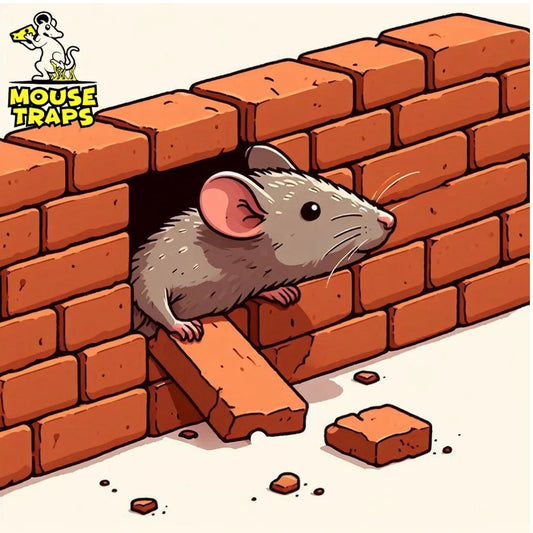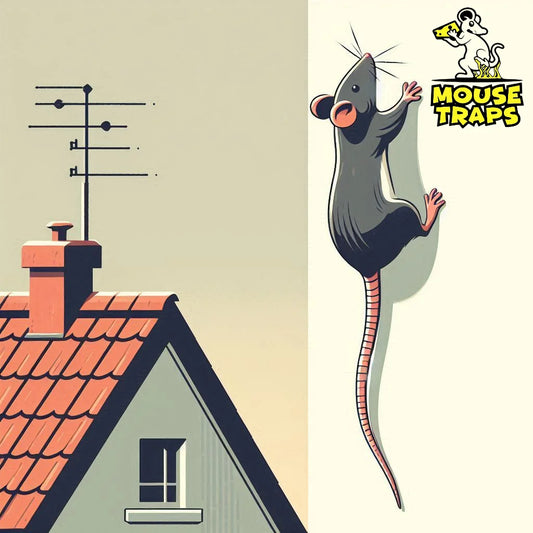Introduction:
Rats nesting in the attic can be both a nuisance and a health hazard, causing damage to property and potentially spreading diseases. It's important to take steps to keep rats away, from your attic and ensure your home remains an cozy place. In this blog we'll delve into methods you can use to prevent rats from getting into your attic and safeguarding your property.
Seal Entry Points:

- Conduct a thorough inspection of the exterior of your home, paying close attention to areas where pipes, vents, cables, and wires enter the structure. Even small gaps can provide entry points for rats.
- Use materials that rats can't chew through, such as steel wool, metal flashing, or hardware cloth, to seal any openings.
- Ensure that attic vents and chimneys are properly screened with wire mesh to prevent rats from entering through these openings.
- Make sure to inspect your home, for any openings or damages, in the foundation and walls and patch them up using concrete, caulk or appropriate sealants.
Trim Trees and Shrubs:

- Trim back tree branches and shrubs that overhang or touch the roof of your home. Rats are excellent climbers and can use these branches as a bridge to access your attic.
- Aim to create a clearance of at least 3 feet between trees and shrubs and your home's exterior.
Secure Garbage Bins:

- Use tightly sealed garbage bins with locking lids to prevent rats from accessing food scraps and other potential sources of nourishment.
- Avoid leaving garbage bags outside overnight, as this can attract rats and other pests.
Remove Food Sources:

- Store pet food, birdseed, and other food items in sturdy, airtight containers made of metal or thick plastic.
- Clean up spilled food and crumbs promptly, both inside and outside your home.
- Keep outdoor dining areas clean and free of food debris.
Keep Attic Clean:

- Remove clutter, old boxes, and unnecessary items from your attic to eliminate potential nesting materials for rats.
- Inspect insulation for signs of damage or nesting activity, and replace or repair it as needed.
- Regularly vacuum and dust the attic to remove dust, dirt, and debris that could attract pests.
Use Traps:
Live Humane Traps:
Live traps offer a humane alternative to traditional snap traps. These devices catch mouse / rats gently letting you set them free unharmed, in their habitat.

- Humane: Captures the mouse alive without harming it.
- Reusable: Can be used multiple times.
- Safe: Minimizes the risk of injury to humans and pets.
- Environmentally friendly: Doesn't involve the use of chemicals or toxins.
Sticky Glue Trap:
Sticky glue pad traps are another option for mouse control. These traps have surfaces that catch mouse / rats as they step on them. Sticky glue pads are easy to use and non-toxic:

- Effective: Captures mice quickly without the need for bait.
- Easy to use: Requires no setup, just place it in the desired location.
- Disposable: Once a mouse is caught, you can simply dispose of the trap.
- Can capture multiple mice: Some glue traps can catch more than one mouse at a time.
Tips:
- Place snap traps or live traps in areas where rat activity has been observed, such as along walls or near entry points.
- Bait traps with peanut butter, bacon, or other high-protein foods that are attractive to rats.
- Check traps frequently and dispose of captured rats in accordance with local regulations.
Consider Natural Deterrents:

- Peppermint oil: Soak cotton balls in peppermint oil and place them in areas where rats are likely to enter or nest. The strong scent of peppermint may deter rats.
- Mothballs: Place mothballs in mesh bags or containers and strategically position them in the attic. However, be cautious as mothballs contain toxic chemicals and should be used with care, especially in enclosed spaces.
Conclusion:
To keep rats out of your attic you'll need to take steps, like sealing off entry points getting rid of any food they might be, after and making sure the attic stays tidy and free of clutter. Taking these steps can reduce the likelihood of rats entering your home and causing harm or health concerns, for your family. If you find it hard to handle a rat issue by yourself it's best to reach out to experts who can tackle the problem efficiently and swiftly.




